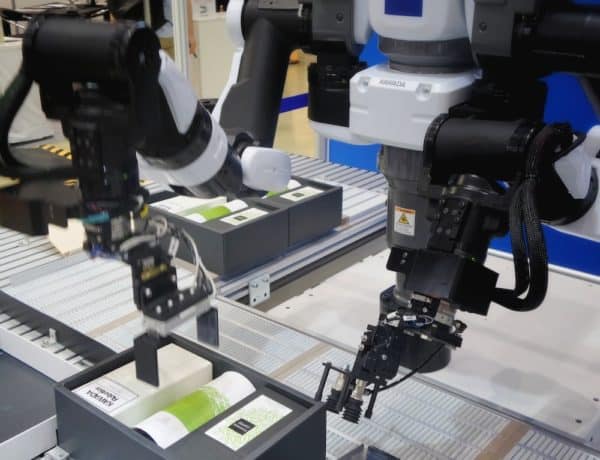
When we think of robotics, we often imagine sophisticated machines with intricate mechanical systems and precise movements. Actuated valves, although less visible, play a crucial role in powering these robotic systems. In this blog post, we will explore how actuated valves are utilised in robotics, their functions, and the transformative impact they have on the field.
Actuated valves serve as vital components in robotic systems by controlling the flow of fluids and gases. They enable the precise regulation of hydraulic and pneumatic systems, which are widely used in robotics for various purposes. Whether it’s manipulating robotic limbs, providing force feedback, or enabling gripping and manipulation tasks, actuated valves are at the heart of these operations.
One of the primary applications of actuated valves in robotics is in the control of hydraulic systems. Hydraulic actuators provide high force capabilities, making them ideal for applications that require strength and precision. Actuated valves regulate the flow of hydraulic fluid to control the movement and positioning of robotic limbs. By adjusting the valve position and flow rate, robotic arms can perform intricate movements with the necessary force and speed, mimicking human-like dexterity.
Pneumatic systems, on the other hand, rely on compressed air or gas to generate force and movement. Actuated valves play a critical role in controlling the flow of compressed air, enabling precise motion control in pneumatic actuators. Pneumatic actuators are commonly used in applications where speed and responsiveness are crucial, such as pick-and-place operations, gripping, and robotic assembly. Actuated valves ensure accurate and rapid control of the airflow, allowing robots to perform tasks with exceptional speed and agility.
Beyond motion control, actuated valves also contribute to force feedback and tactile sensing in robotic systems. By utilising pressure sensors and feedback mechanisms, actuated valves provide information about the forces exerted by the robot on its surroundings. This feedback allows robots to adjust their actions based on the detected forces, providing a more delicate and intuitive interaction with the environment. Actuated valves play a crucial role in modulating the pressure and flow of fluids to create realistic force feedback, enabling applications such as teleoperation, virtual reality simulations, and robotic surgery.
The integration of actuated valves in robotic gripping and manipulation systems is another noteworthy application. By precisely controlling the flow of fluid or air to robotic grippers, actuated valves enable the grasping and manipulation of objects with varying shapes, sizes, and materials. Gripping force can be adjusted by regulating the valve position and pressure, allowing robots to handle fragile objects delicately or exert a firm grip when needed. Actuated valves in robotic grippers are essential for achieving versatile and adaptive grasping capabilities, enabling robots to handle a wide range of objects in diverse environments.
Actuated valves also contribute to the overall safety and efficiency of robotic systems. Safety valves, pressure relief valves, and other protective mechanisms ensure that hydraulic or pneumatic systems operate within safe parameters, preventing excessive pressure buildup and potential damage. By incorporating fail-safe mechanisms and intelligent control algorithms, actuated valves enhance the reliability and safety of robotic operations, reducing the risk of accidents or equipment failures.
As robotics continues to advance, actuated valves will play an increasingly critical role in enabling advanced capabilities. The integration of digital technologies, such as IoT connectivity and advanced control algorithms, further enhances the potential of actuated valves in robotics. Real-time monitoring and remote control of valve parameters enable improved system diagnostics, predictive maintenance, and optimised performance.
In conclusion, actuated valves are indispensable components in robotics, enabling precise control of fluid and gas flow for motion, force feedback, gripping, and manipulation. Their integration empowers robots to perform tasks with remarkable accuracy, speed, and adaptability. As robotics technology continues to evolve, actuated valves will continue to be essential in unlocking new possibilities and driving innovation in the field.
 Gearfuse Technology, Science, Culture & More
Gearfuse Technology, Science, Culture & More


